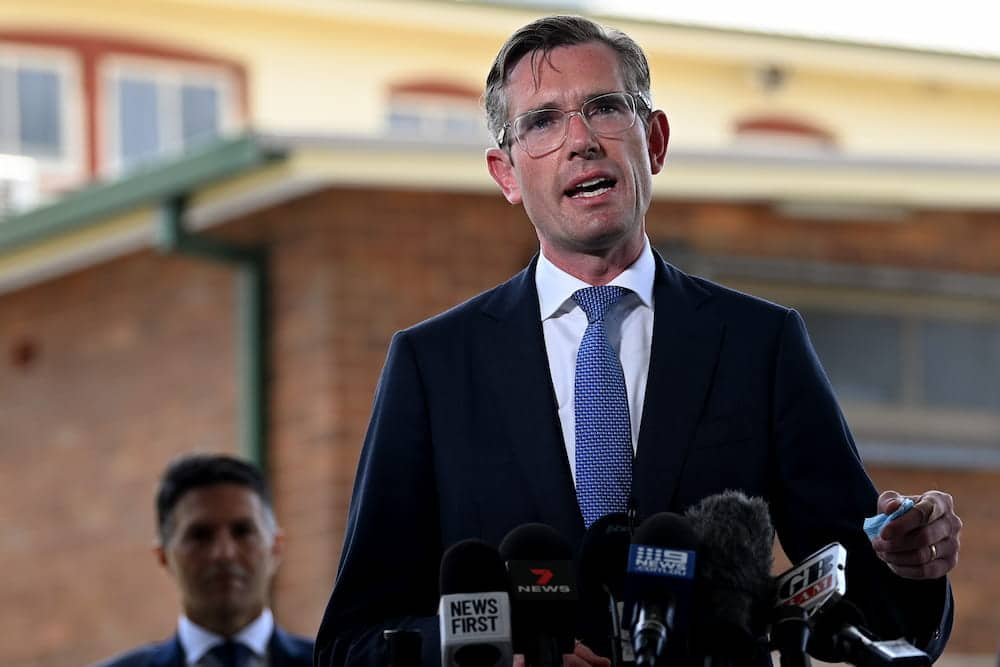Hundreds of public school workers in NSW tested positive to coronavirus this week, however the government has heralded the school return as a “major achievement”.
Premier Dominic Perrottet wanted to focus “on the positive” after people said returning children to classrooms “couldn’t be done”.
“What I saw this week was smiles on so many kids’ faces right across the state as they returned back to class. We had a plan, we’ve resourced that plan, we executed that plan,” Mr Perrottet says.
Some 86 per cent of school children were back in classrooms this week, Education Minister Sarah Mitchell said on Friday, and that didn’t include schools in the west of the state, which go back next week.
While 617 staff across 438 schools tested positive for COVID-19, Ms Mitchell said casual teachers and existing staff have been able to cover for them.
“We have been able to manage those staffing absentee rates with the programs that we’ve had in place.”
The state has not yet had to draw on additional staff such as final year university students or department executive staff.
Some 41.6 per cent of primary school aged children have now received at least one dose of the vaccine, while 42.8 per cent of the state has received a booster (or top-up for immunocompromised people).
Those aged 16 and 17 are now eligible for boosters in NSW health clinics, following the advice of the Australian Technical Advisory Group on Immunisation.
NSW recorded 10,698 new coronavirus cases and 31 deaths on Friday amid signs of a stabilising outbreak as more health staff return to work.
Ten people who died had received three doses of a COVID-19 vaccine, 18 people had received two doses, and three people were not vaccinated.
Hospitalisations fell to 2494 on Friday while ICU admissions remained at 160, with 75 now on ventilators, an increase of seven on the previous day.
Case numbers have subsided from peaks in mid-January, but it’s anticipated the return of children to classrooms could cause case numbers to rise again.
Mr Perrottet says hospitals are operating “well within capacity”, allowing elective surgery to resume in private hospitals and non-metropolitan public hospitals from Monday.
Chief Health Officer Kerry Chant says it was pleasing to see hospitalisations and ICU admissions decrease, but people on ventilators remain at “a more constant level”.
“We expect that to be a little bit slower in declining because a number of the patients have got longer length of stays in ICU when they are ventilated, but we will see that number come down as well,” Dr Chant says.
Case numbers and hospitalisations are plateauing and more health staff are back on the job, but tracking the spread of the virus in the community is still a challenge.
“One of the pieces of the puzzle we don’t know is just what is the proportion of people that have actually been infected? Because we know that not everyone will have symptoms,” Dr Chant said on Friday.
More than a million people who are temporarily immune after being infected, the booster rollout, and “the behaviours that individuals take in protecting themselves and their loved ones”, were helping lower community transmission, Dr Chant says.
Healthcare settings still have a “Red” status, the highest of the three in the state’s COVID-19 risk monitoring dashboard, updated weekly.
But “available metrics continue to point towards a stabilisation of the outbreak”.
As of Monday, 3034 health staff were in isolation after potential exposure to the virus, down from 4523 the previous week.
Get all the latest Canberra news, sport, entertainment, lifestyle, competitions and more delivered straight to your inbox with the Canberra Daily Daily Newsletter. Sign up here.



